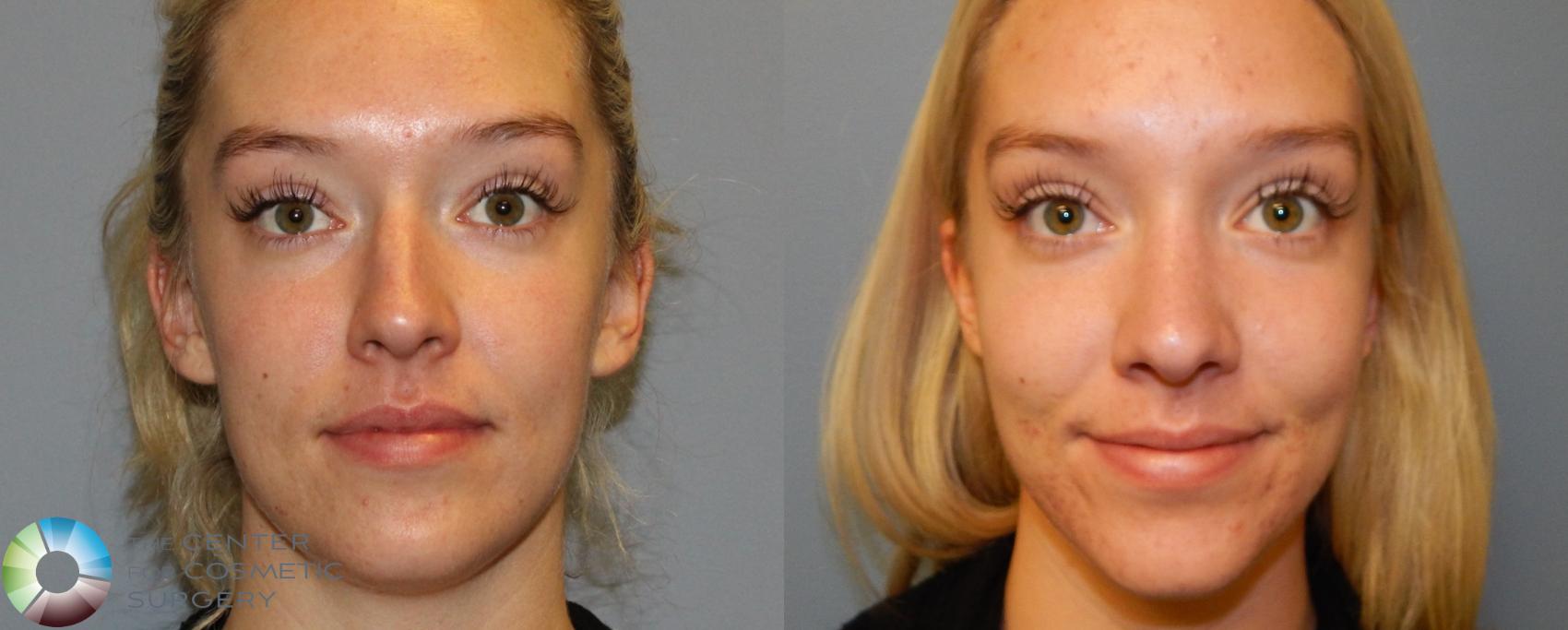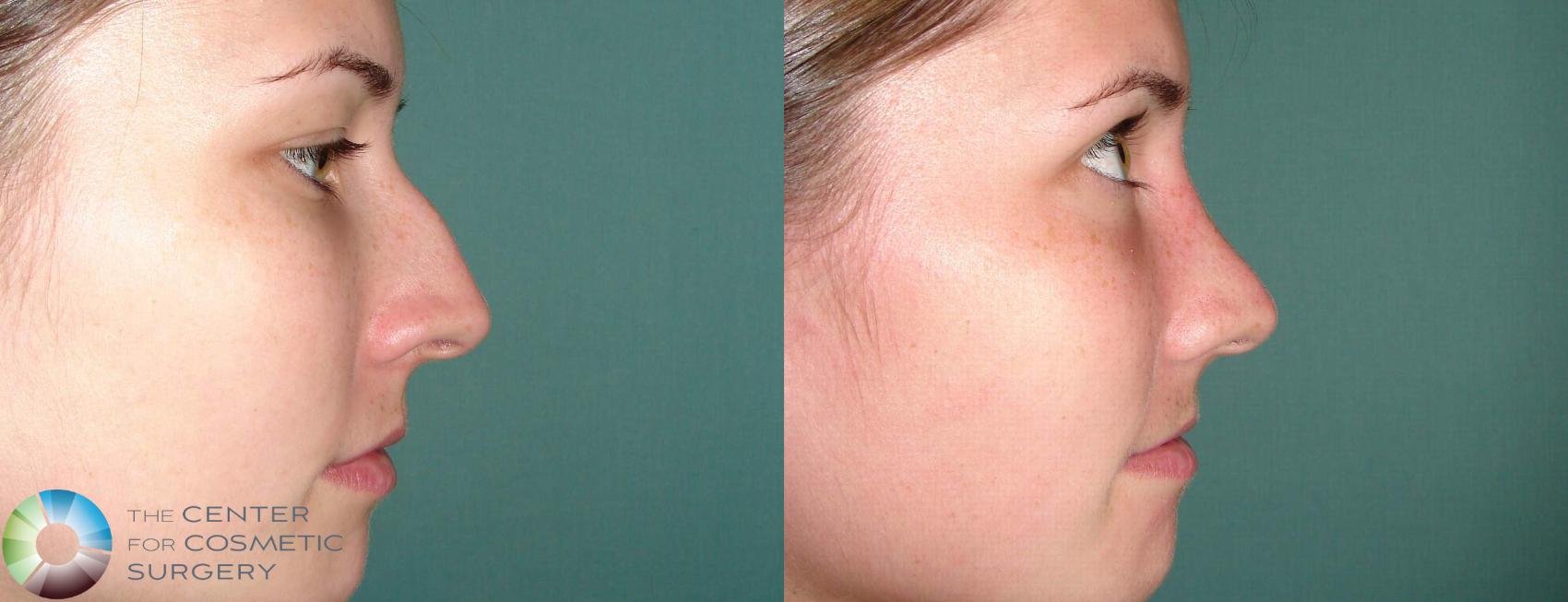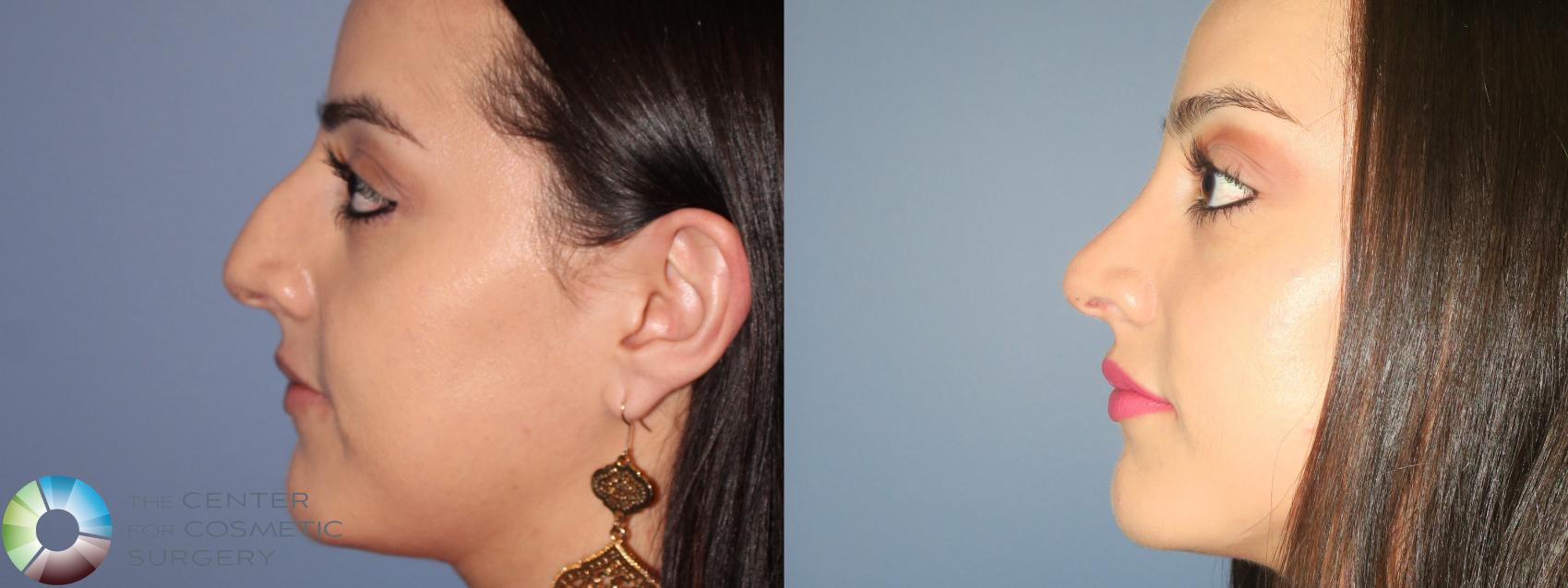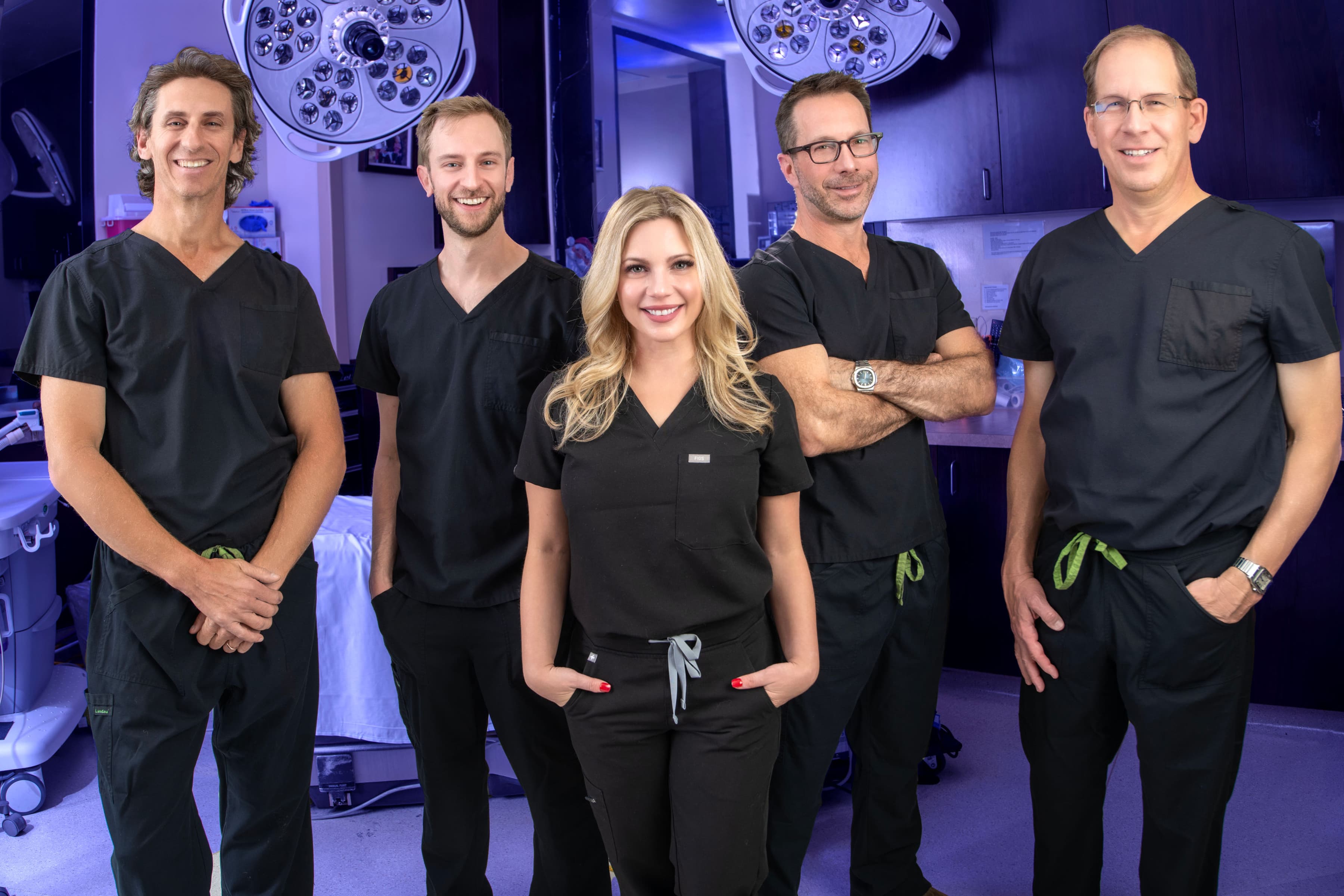The Center for Cosmetic Surgery
725 Heritage Road #100
Golden, CO 80401
Phone: (303) 278-2600
Monday – Friday: 8 a.m.–5 p.m.
The Center for Cosmetic Surgery
755 Heritage Road #100
Golden, CO 80401
Phone: (303) 279-6100
Monday – Friday: 8 a.m.–5 p.m.
The Center for Cosmetic Surgery
501 South Cherry Street #900
Denver, CO 80246
Phone: (303) 951-2100
Monday – Friday: 8 a.m.–5 p.m.
The Center for Cosmetic Surgery
501 South Cherry Street #900
Denver, CO 80246
Phone: (303) 951-2102
Monday – Friday: 8 a.m.–5 p.m.
The Center for Cosmetic Surgery
6985 Tutt Blvd Ste 110
Colorado Springs, CO 80923
Phone: (719) 380-1823
Monday – Friday: 9 a.m.–5 p.m.
Rhinoplasty in Denver, CO
- 1-2.5 Hour Surgery
- Back to Work: 1-2 Weeks
At our Denver plastic surgery practice, we understand that the nose is one of your most critical facial features with respect to both your facial balance and breathing without difficulty. Board-certified plastic surgeon Dr. Paul Steinwald and Dr. Teresa Cunningham perform rhinoplasty for people from Colorado Springs, Fort Collins, and Vail, CO; Cheyenne, WY; and surrounding areas to improve airflow (the “septoplasty” component), correct post-traumatic external nasal deformities, and/or improve cosmetically undesirable features of the nose. He often addresses several of these issues for his patients during the same surgery.
Because the structures of the nose are among the most complex and delicate of any feature, Dr. Steinwald and Dr. Cunningham take a precise and conservative approach to nose surgery. Rhinoplasty can produce highly satisfying results for those who have long been unhappy with the aesthetics of their noses or those struggling with breathing difficulties or injury.
Am I a Candidate for Rhinoplasty?
Rhinoplasty is intended to improve the shape and function of the nose. A bump can be reduced, the nasal tip can be refined, and many other concerns can be addressed.
Rhinoplasty incisions are made inside the nostril and, typically, across the narrowest part of the columella between the nostrils. This is what’s known as an “open” rhinoplasty. In exchange for the small external incision, an open rhinoplasty is more precise and allows more complex maneuvers than would be possible in a “closed” rhinoplasty without the external incision. Once the incisions are made, the bony and cartilaginous framework of the nose is exposed. Cartilage and bone can be removed, reshaped, or added to enhance the nasal form.
Many different techniques exist to reshape the nose into a more aesthetically pleasing structure given the wide variability in preoperative shape.
A rhinoplasty consultation will include a physical exam and computer modeling to illustrate what can be achieved surgically.
Fact & Fiction About Rhinoplasty
Many plastic surgeons consider rhinoplasty to be the most challenging operation.
The nose is made up of a mucosal lining, cartilage, bone, and skin. Each of these structures is affected by the tissues adjacent to it and, in turn, affects other tissues. Compounding the matter is the fact that the nose is not just supposed to be pretty; it actually has to function. Finally, the after-effects of rhinoplasty may not be seen for years. We learned this after watching the destructive rhinoplasty techniques of the 1980s that resulted in nasal collapse over the ensuing 10 to 20 years. Modern rhinoplasty preserves the natural structure of the nose to the greatest extent possible in an effort to provide support for long-lasting results.
You cannot simply choose a nose out of a magazine.
A number of factors influence what might be considered the “ideal” nose for a given individual. Facial shape and size, ethnic background, and the structural aspects of the nose itself all impact the surgical plan. Because of this, patients cannot expect to have a nose that looks like anyone else’s unless they happen to look a lot like that person in the first place. We utilize the Vectra XD 3-D imaging system to help plan the operation and communicate that plan to the patient. This ensures that both patient and surgeon are on the same page and is the best way to verify that the patient’s expectations are realistic.
Nasal packing is rarely necessary or beneficial.
Many surgeons continue to pack the nose with gauze at the end of the procedure despite the fact that research has shown that it has no benefit and is associated with significant risk and discomfort. Dr. Steinwald and Dr. Cunningham virtually never pack noses after rhinoplasty.
How To Choose a Rhinoplasty Surgeon
- Review many impressive before-and-after photos.
- Find a surgeon who specializes in cosmetic plastic surgery.
- Seek a surgeon who upholds the proper credentials.
- Make sure the surgeon uses only an accredited, state-of-the-art surgical facility.
- Decide if, upon meeting the surgeon, you make a connection.
Identifying Good Rhinoplasty Results
- The nose should have a straight dorsum or perhaps a slight curve, based on patient preference. The bridge of the nose should approximate a straight line in men and may have a slight, gentle curve in women. The “scooped” appearance of an overdone dorsum is to be avoided.
- Tip projection should be proportionate to the length of the dorsum. In most rhinoplasties, the length of the nose is altered minimally, if at all. The projection of the tip of the facial plane is commonly changed, however, and should be increased or decreased as necessary to achieve classic proportions within a person’s ethnicity.
- The nose should fit the face and look natural. Above all else, the surgical result should look like it is a nose the person could have been born with. This requires a delicate balance.
OUR EXCEPTIONAL PLASTIC SURGEONS
Board-certified plastic surgeons Dr. Steven Vath, Dr. Andrew Wolfe, Dr. Paul Steinwald, Dr. Matthew Freeman, and Dr. Teresa Cunningham lead our patient-centered practice with warmth, honesty, and respect.
How Much Does Rhinoplasty Cost in Denver, CO?
The cost of rhinoplasty surgery at our practice depends on the technique Dr. Steinwald and Dr. Cunningham use, the extent of the surgery, and if you choose to combine a nose job with other procedures. During your consultation with Dr. Steinwald or Dr. Cunningham, we provide a personalized estimate of the cost. We also offer financing options that can help the procedure fit most patients’ financial situations.
Rhinoplasty FAQ
Can any cosmetic surgeon perform rhinoplasty?
Rhinoplasty is best left to a board-certified plastic surgeon who specializes in these complex procedures. Many excellent plastic surgeons in Denver refer rhinoplasty patients to our specialists, Dr. Steinwald and Dr. Cunningham, who are not only certified by the American Board of Plastic Surgery but also have many years of experience with all types of nasal issues.
What is a closed rhinoplasty, and what does it correct?
Post-traumatic (or natural) nasal deformities such as a dorsal hump on profile view, a widened dorsal bridge, deviation of the tip or crookedness of the nose in general often require fracture and resetting of the bones and/or cartilage through small internal incisions (a “dorsal rhinoplasty”). Dr. Steinwald and Dr. Cunningham then reset the nasal pyramid in a more neutral, cosmetically pleasing position.
What is an open rhinoplasty, and what does it correct?
Non-traumatic cosmetic issues of the nose may include several of the aforementioned bony/cartilaginous deformities, as well as tip irregularities such as a boxy, bulbous, or asymmetric tip or irregular or widened nostrils. Correction of these issues usually requires extending the inner nasal incisions across the area between the nostrils via an “open-tip rhinoplasty” to directly access and reshape the cartilage irregularities (via trimming and/or suturing) that are responsible for the appearance of the lower nose.
Will a nose job improve my breathing?
Cosmetic nose surgery isn’t designed to address breathing issues. Patients who have suffered nasal trauma may have functional issues such as poor airflow or chronic sinusitis. The former is often due to buckling or fracturing of the midline nasal septum, either due to congenital development or following trauma. Resection of a majority of this structure (a submucous resection of the nasal septum, or “SMR”) through small intranasal incisions usually results in dramatic functional improvements. These procedures are typically performed under general anesthesia, with the nasal packing removed the following day.
Will I have scars after a rhinoplasty?
If you have a closed rhinoplasty, all your scars are concealed within your nostrils, and none are visible. If you have an open rhinoplasty, you’ll have an incision across the strip of flesh between your nostrils. After several weeks of healing, the fine scar will fade and typically become almost undetectable.
Can I combine my rhinoplasty with other procedures?
Yes. Dr. Steinwald and Dr. Cunningham specialize in facial plastic surgery and often combine other procedures with nose surgery. A specialist on our team can evaluate your features during a candid consultation and make recommendations about any other options that may serve your goals.
Where is rhinoplasty performed?
Dr. Steinwald and Dr. Cunningham perform rhinoplasty at Apex Surgical Facility, our accredited surgical center, which is outfitted with state-of-the-art safety equipment and staffed by our experienced team.
What kind of anesthesia is used for rhinoplasty?
Rhinoplasty typically requires general anesthesia and takes about 1 to 3 hours, depending on the degree of correction. Open tip work alone may be done under IV sedation.
What is the recovery like after rhinoplasty?
For closed rhinoplasties, an external splint is in place for 4 to 5 days. If you only undergo a “tip rhinoplasty,” bruising is usually minimal, and splinting is not necessary.
Most discomfort is manageable with prescription and over-the-counter pain medications. We ask patients to keep their heads elevated even when sleeping for several days after surgery, which helps to reduce swelling and bruising. Carefully applying ice packs can also help.
When can I return to work and exercise after rhinoplasty?
Most patients return to work or other daily activities within 1 to 2 weeks. Many feel well enough to return to work soon, but may have cosmetic bruising, depending on the extent of the procedure. After 2 weeks, most of the swelling and visible bruising subside. Some minor residual swelling may persist for many months, and it may take 6 months to a year for final results. Patients can return to light exercise after a couple of weeks and gradually return to more activity after about a month. It’s important to avoid sports or activities that may damage the nose.
What is revision rhinoplasty?
Revision rhinoplasty is a secondary nose surgery to correct or refine the results of a previous rhinoplasty. Some patients pursue revision rhinoplasty to improve breathing, address asymmetry, or enhance the aesthetic outcome of their first surgery. Because the nasal structure has already been altered, revision procedures are often more complex and require advanced surgical skill and experience to achieve a balanced, natural-looking result.
Making your cosmetic goals a reality is easier than ever with our flexible financing options:
LEARN MORE ABOUT FINANCING OPTIONS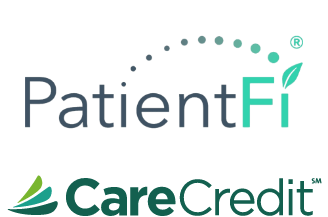
Getting Started
Dr. Steinwald and Dr. Cunningham apply techniques that are current yet proven to provide natural-looking results that speak for themselves. To learn what cosmetic nose surgery can do for you, request your consultation using our online form or simply call (303) 278-2600. The Center for Cosmetic Surgery has two plastic surgery offices conveniently located in the Denver metropolitan area. One is located just outside Denver in lovely Golden, Colorado, immediately off 6th Avenue West, and the other is located downtown in Cherry Creek, Denver.


